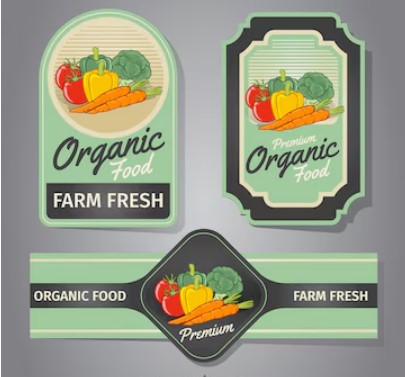You know that sinking feeling when you spot your product on the shelf with a peeling, water-damaged label? Your brand looks cheap. Unprofessional. Like something you’d find in a bargain bin.
It happens more often than you think. Waterproof labels could have prevented this disaster, but most business owners only discovered this after the damage was done. The condensation in fridges, steam in bathrooms, and moisture during transport all conspire against traditional paper labels.
When Labels Fail, Everything Falls Apart
Last month, a small soap maker from Newtown contacted us in panic. Her handmade products looked amazing until they hit bathroom shelves. The steam and splashes turned her beautiful labels into soggy messes. Customers started questioning the quality of the soap itself.
This isn’t unusual. Water finds its way into the most unexpected places.
Your products travel through warehouses, delivery trucks, and retail environments before reaching customers. Each step brings moisture risks. A small leak in a delivery van during Sydney’s rainy season can destroy hundreds of labels.
The psychology here is brutal. Customers judge product quality by packaging appearance. A damaged label suggests poor manufacturing standards. They assume that if you can’t get the label right, what else did you mess up?
Some business owners try coating paper labels or using lamination. These half-measures provide false security. They might survive light moisture but fail under real-world conditions. The adhesive is still weak. The paper core still absorbs humidity.
The Science Behind Water Resistance
Traditional paper labels work like sponges. They absorb moisture from the air, even when you can’t see it happening. This gradual absorption weakens the material structure and adhesive bonds.
Synthetic materials behave differently. Polypropylene doesn’t absorb water at all. It creates a barrier that moisture cannot penetrate. The material stays strong regardless of humidity levels or direct water exposure.
But material choice is only half the battle. The adhesive chemistry determines whether labels stay put when wet. Standard adhesives lose tackiness when exposed to moisture. Marine-grade formulations maintain their grip even underwater.
Temperature cycling makes everything worse. Products moving from cold storage to warm retail environments create condensation. These thermal shock tests label bonds harder than steady moisture exposure. You need materials designed for these rapid temperature changes.
Professional food photographers understand this challenge. They often replace product labels with printed acetate sheets for wet shots because regular labels fail under studio conditions. That’s a temporary solution for photos, but your actual products need permanent protection.
Industries Playing with Fire
Food companies face the biggest risks. Refrigerated sections in supermarkets create constant condensation challenges. Your sauce jars sweat. Beer bottles get ice-cold. Frozen food packaging encounters extreme temperature swings.
Think about olive oil bottles. They might sit in warm warehouses, then cold trucks, then heated shops, then customer fridges. Each transition creates moisture stress on the labels.
Personal care brands battle humidity daily. Shampoo bottles live in steamy bathrooms. Hand soap dispensers get splashed constantly. Even premium skincare products suffer when labels fail in damp conditions.
Healthcare requires absolute reliability. Medicine labels must remain readable for safety reasons. A smudged dosage instruction could cause serious problems. Regulatory compliance often mandates specific durability standards that paper labels cannot meet.
Craft breweries learned this lesson hard during the microbrewery boom. Beautiful artisanal labels looked perfect until they hit refrigerated cases. Condensation destroyed the aesthetic appeal that justified premium pricing.
The Hidden Economics
Most suppliers focus on upfront label costs, ignoring total ownership expenses. Failed labels create multiple cost layers that add up quickly.
Reprinting costs money. Replacing damaged inventory costs more. Customer complaints cost time and reputation. Lost sales cost future revenue. Brand damage costs long-term market position.
A bottle of premium gin with a peeling label might get marked down 50% for clearance. That’s not just lost margin on one bottle. Its brand devaluation is affecting future sales at full price.
Smart businesses calculate these hidden costs before choosing label materials. The few extra cents per label for waterproof options often save pounds in total costs.
Storage considerations matter too. Waterproof labels maintain quality longer in warehouse conditions. Less waste from damaged inventory. Reduced emergency reorder costs. Better inventory management overall.
Technical Specifications Matter
UV stability affects indoor products, too. Fluorescent lighting in retail environments slowly fades inferior inks. Quality synthetic materials incorporate UV inhibitors that protect colour integrity over time.
Substrate thickness impacts handling durability. Thin materials tear easily during application or removal. Thicker substrates resist damage but cost more. Consider your specific handling requirements when selecting thickness.
Surface texture affects print quality and adhesion. Smooth substrates provide better print clarity but might require stronger adhesives. Textured surfaces hide minor printing imperfections but can trap dirt or moisture at the edges.
Making Smart Transitions
You don’t need to switch everything immediately. Start with your highest-risk products or biggest volume sellers. Test waterproof options on selected lines before committing to full transitions.
Consider seasonal factors too. Products launched before summer might benefit from enhanced moisture protection. Winter heating systems create humidity fluctuations that stress standard labels.
Some businesses find they can reduce order quantities with synthetic materials. Longer shelf life means less waste and better inventory turnover. Smaller, frequent orders might actually improve cash flow.
Final Thoughts
Water damage creeps up slowly, then hits all at once. By the time you notice widespread label failures, customer perception has already shifted. Prevention costs less than reputation repair.
Your brand investment deserves protection from day one. Waterproof labels aren’t luxury items anymore. They’re business insurance for companies serious about professional presentation.
The technology exists. The economics work. The only question is whether you’ll protect your brand before problems appear or scramble to fix reputation damage afterwards.
Ready to bulletproof your brand against moisture damage? Chat to our team about waterproof labelling solutions designed for your specific requirements and budget.











Leave a comment